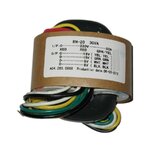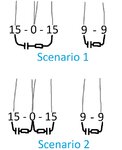mikaelmark
Junior Member level 2

You´re findings are interesting, as I also intend to use the snubber for my Lehmann Clone but I´m a bit confused as the recommended values for snubbers are 47nF - 1uF and 4,7Ohm - 47Ohm. But however, if you have measured, I will trust you!
https://diyaudioheaven.wordpress.com/tutorials/power-supplies/snubbering/
Did you leave the four 0,1uF MKT or did you removed them before measuring? Those bypass caps should leak some AC, and this is the reason I want to replace them with snubber instead. I think they should not be used together!
Also, do you recommending me to leave the PC-filter for the primary side together with the snubber?
And what kind of resistor should be best; Metal film, Carbon dioxide, Carbon composition or MOX? Some people says the Carbon composition (CCR) will be best here, due the risk of high Wattage spikes for snubbers.
https://diyaudioheaven.wordpress.com/tutorials/power-supplies/snubbering/
Did you leave the four 0,1uF MKT or did you removed them before measuring? Those bypass caps should leak some AC, and this is the reason I want to replace them with snubber instead. I think they should not be used together!
Also, do you recommending me to leave the PC-filter for the primary side together with the snubber?
And what kind of resistor should be best; Metal film, Carbon dioxide, Carbon composition or MOX? Some people says the Carbon composition (CCR) will be best here, due the risk of high Wattage spikes for snubbers.





